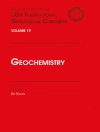For an unknown reason, the Steller sea lion population in Alaska has declined by 80% over the past three decades. In 2001, the National Research Council began a study to assess the many hypotheses proposed to explain the sea lion decline including insufficient food due to fishing or the late 1970s climate/regime shift, a disease epidemic, pollution, illegal shooting, subsistence harvest, and predation by killer whales or sharks. The report’s analysis indicates that the population decline cannot be explained only by a decreased availability of food; hence other factors, such as predation and illegal shooting, deserve further study. The report recommends a management strategy that could help determine the impact of fisheries on sea lion survivalestablishing open and closed fishing areas around sea lion rookeries. This strategy would allow researchers to study sea lions in relatively controlled, contrasting environments. Experimental area closures will help fill some short-term data gaps, but long-term monitoring will be required to understand why sea lions are at a fraction of their former abundance.
Committee on the Alaska Groundfish Fishery and Steller Sea Lions & Division on Earth and Life Studies
Decline of the Steller Sea Lion in Alaskan Waters [PDF ebook]
Untangling Food Webs and Fishing Nets
Decline of the Steller Sea Lion in Alaskan Waters [PDF ebook]
Untangling Food Webs and Fishing Nets
Achetez cet ebook et obtenez-en 1 de plus GRATUITEMENT !
Langue Anglais ● Format PDF ● Pages 216 ● ISBN 9780309512534 ● Maison d’édition National Academies Press ● Publié 2003 ● Téléchargeable 3 fois ● Devise EUR ● ID 7146100 ● Protection contre la copie Adobe DRM
Nécessite un lecteur de livre électronique compatible DRM












